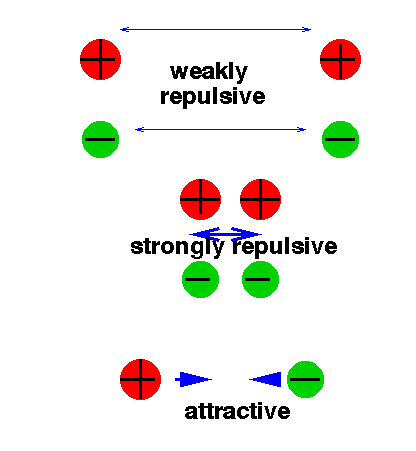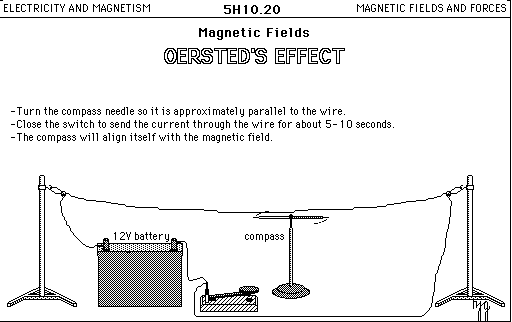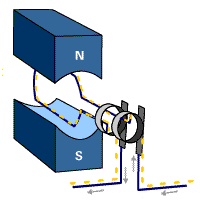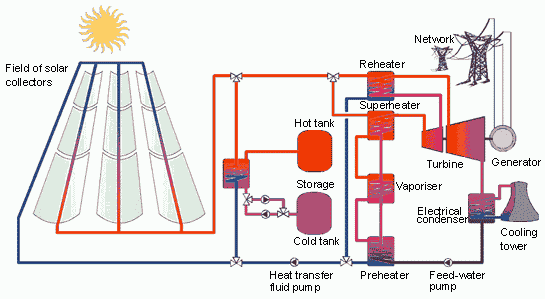 force could then be either attractive or repulsive.
force could then be either attractive or repulsive.

 force could then be either attractive or repulsive.
force could then be either attractive or repulsive.

In 1820 Oersted did this experiment:

and discovered that an electric current creates a magnetic field
Similarly, a coil of wire with a current passing through it generates a magnetic field. This is known as an electromagnet or solenoid .
So now we know that a current can create a magnetic field. If a magnetic field can create a current then we have a means of generating electricity. Experiments showed that a magnetic just sitting next to a wire produced no current flow through that wire. However, if the magnet is moving a current is induced in the wire. The faster the magnet moves, the greater the induced current.
This is the principal behind simple electric generators in which a wire loop is rotated between to stationary magnetics. This produces a continuously varying voltage which in turn produces an alternating current .
Visualization of a simple electric generator:

To generate electricty then, all we really want to do is have some (mechanical) mechanism turn a crank that rotates a loop of wire between stationary magnets. The faster we can get this crank turned, the more current we can generate.
Popular Methods of Turning the Crank:
